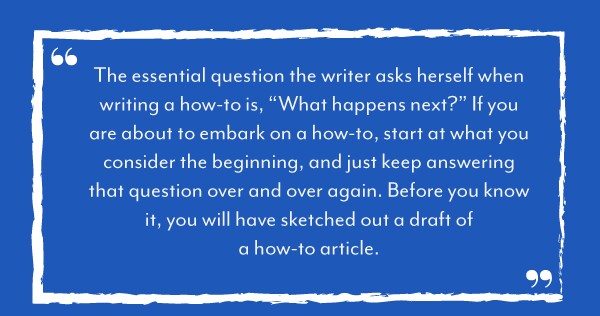Writing a good article requires two things: good content and good technique. Good content is relatively easy to create. Most people don’t realize it, but everybody has interesting things to say. Good technique is harder — it can seem abstract and nuanced, and it’s often the thing that makes or breaks an article.
A weak article falls flat. A strong article changes minds, gains followers, carries weight, demands respect. It’s a worthy and valuable pursuit.
For writing a good article: minimize your barrier to entry. Make it easy for your reader to be drawn in.
A large opening paragraph at the start of an article is a huge barrier to entry. Your reader has to wade through a large wall of text before determining if the article is really interesting and worth reading. This requires a large expenditure of effort. Most people won’t bother.
Keep your opening short. A one-sentence or two-sentence leading paragraph is an easy buy-in. You can skim it and read it in barely more time than it would take to scroll past.
Start with something short and easy to engage with. Prove to your reader that you’re providing value, then ask them to expend effort.
For writing a good article keep your paragraphs short and your text visually appealing.
Short paragraphs are easy. They feel like an accomplishment. You always want to read just one more — your eye gets drawn down the page. So break your text up. Keep your reader chasing the words from paragraph to paragraph. Balance words with empty spaces — like the breaths between spoken sentences.
Short does not mean that your writing can’t be stylistic and beautiful. Do not make the mistake that short must be bland. Short means strong and precise.
When you’re brief, your words aren’t simple and cheapened. They’re potent.
For writing a good article, keep it short and sweet. Just get to the point. Cut out all unnecessary words in a sentence.
For writing a good article, give readers substance. One of the worst things on any news feed is an article that says nothing.
Often the empty articles are packaged up as something useful. There are enough “top five tips” and “productivity hacks” articles in the world to last me to eternity — if I didn’t die of boredom first. Rarely do any of them contain anything useful. They’re just abstractions — they have nothing of substance to say.
There are more shallow, surface-level blog posts on my radar in any given day than I care to count.
They’re made of words, but there’s no point and no meaning. It’s content for the sake of having content.
Don’t write content for the sake of writing content. Write content for the sake of conveying meaning and understanding. Tell your reader something. Imagine they ask “why?” in response, and then answer that question.
The world does not need more surface-level going-through-the-motions content. It needs content designed to teach, convey meaning, make people understand.
For writing a good article, tell me a story. People love stories. It’s one of the basic truths of humanity — we always respond to a compelling story.
One of the best ways to draw a reader into an article is to bring it to life with human interest. Capture their attention with a recounting of an event, the setting of a stage, the unfolding of a plot.
Avoid dry writing. In the content-oversaturated age of the internet, nobody’s going to read something bland.
Stories are a brilliant way to open articles. They’re equally brilliant ways to illustrate a point. They don’t have to be excessive and garish to be effective. Tell me in your article about a specific tool you recommend using, and then tell me a story about how you used it yourself and what it did for you. Short, simple, to the point, but suddenly your article is human.
For writing a good article, show, then tell. Start by showing me your point in action, then explain to me what it means and why it matters.
Present your ideas in the following order: illustration, explanation, understanding. Show it to me, then tell me what it is, then help me understand why it works and how to use it myself.
Any other order will bore your reader, and will likely make less sense.
The final and unstated rule of good writing is practice. Practicing one’s craft is how one perfects it. Practice until you internalize the form and structure of a good article, and producing them becomes second nature.
Everybody has something interesting to say. You have more to share than you realize — and the world is always in need of meaningful, compelling content that conveys knowledge and helps people understand.
© Times of U

